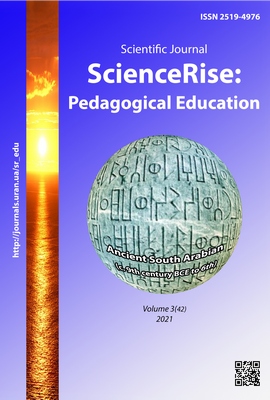Tokenization of educational assets based on blockchain technologies
DOI:
https://doi.org/10.15587/2519-4984.2021.232321Keywords:
tokenization, educational assets, blockchain, smart contracts, consensus algorithms, decentralized registerAbstract
Possible scenarios for using blockchain technology in the field of education are considered. Methods and technologies of tokenization of assets, related to the educational process, are investigated. It is concluded, that the blockchain technology is decentralized and transparent with a high degree of reliability, which ensures the equality of all users of the chain's services. The transparency of the technology guarantees the participants in the process against abuse and forgery of documents. The study of the features of smart contracts made it possible to form the advantages of smart contracts in the field of education. This is, first of all, the conclusion of agreements without the participation of third parties, as well as the security and confidentiality of agreements. This ensures that the terms and subject of the agreement are kept secret, and that no one else can amend the agreement. At the same time, storing the contract in encrypted form ensures its confidentiality. A decrease in the cost of operations was noted. Tokenization of educational assets is considered on the example of preparing and defending a thesis with the subsequent registration of a diploma. The processes of passing the thesis in the context of using blockchain technology and issuing smart contracts are considered in detail. The advantages of using blockchain technology and smart contracts are illustrated with specific examples.
A study of the means and mechanisms for ensuring the confirmation of the authenticity of educational documents, the confidentiality of students' personal cards, and student identification has been carried out.
To create a decentralized distributed ledger for tokenization of educational assets, it is proposed to use blockchain technology and smart contracts based on the Ethereum platform
References
- Nakamoto, S., Bitcoin, A. (2008). Bitcoin: A peer-to-peer electronic cash system. Available at: https://bitcoin.org/bitcoin.pdf
- Tulchinsky, G. (2017). Digital Transformation of Education: Challenges for Higher School. Russian Journal of Philosophical Sciences, 6, 121–136.
- Antonova, D. A., Ospennikova, E. V., Spirin, E. V. (2018). TSifrovaya transformatsiya sistemy obrazovaniya. Proektirovanie resursov dlya sovremennoy tsifrovoy uchebnoy sredy kak odno iz ee osnovnykh napravleniy. Vestnik Permskogo gosudarstvennogo gumanitarno-pedagogicheskogo universiteta. Seriya: Informatsionnye kompyuternye tekhnologii v obrazovanii, 14. Available at: https://cyberleninka.ru/article/n/tsifrovaya-transformatsiya-sistemy-obrazovaniya-proektirovanie-resursov-dlya-sovremennoy-tsifrovoy-uchebnoy-sredy-kak-odno-iz-ee
- Kozlova, N. Sh. (2019). Tsifrovye tekhnologii v obrazovanii. Vestnik Maykopskogo gosudarstvennogo tekhnologicheskogo universiteta, 1.Available at: https://cyberleninka.ru/article/n/tsifrovye-tehnologii-v-obrazovanii
- Svon, M. (2019). Blokcheyn. Skhema novoy ekonomiki. Moscow: Litres, 311.
- Di Francesco Maesa, D., Mori, P. (2020). Blockchain 3.0 applications survey. Journal of Parallel and Distributed Computing, 138, 99–114. doi: http://doi.org/10.1016/j.jpdc.2019.12.019
- Molokovich, D. V. (2018). Integrirovannaya karta studenta kak noviy produkt v tsifrovom bankovskom obsluzhivanii. Sovremennoe sostoyanie i perspektivy razvitiya natsionalnoy finansovo-kreditnoy sistemy. Voronezh, 154–157.
- Fedorova, E. P., Skobleva, E. I. (2020). Application of Blockchain Technology in Higher Education. European Journal of Contemporary Education, 9 (3), 552–571. doi: http://doi.org/10.13187/ejced.2020.3.552
- Tsai, W.-T., Feng, L., Zhang, H., You, Y., Wang, L., Zhong, Y. (2017). Intellectual-Property Blockchain-Based Protection Model for Microfilms. 2017 IEEE Symposium on Service-Oriented System Engineering (SOSE), 174–178. doi: http://doi.org/10.1109/sose.2017.35
- Tuğtekin, E. B., Dursun, Ö. Ö., Uğur, S. Ş. (2020). Virtual Identity in Blockchain. Advances in Educational Technologies and Instructional Design. IGI Global, 171–196. doi: http://doi.org/10.4018/978-1-5225-9478-9.ch009
- Kamišalić, A., Turkanović, M., Mrdović, S., Heričko, M. (2019). A Preliminary Review of Blockchain-Based Solutions in Higher Education. Learning Technology for Education Challenges. Cham: Springer, 114–124. doi: http://doi.org/10.1007/978-3-030-20798-4_11
- Mohanta, B. K., Panda, S. S., Jena, D. (2018). An Overview of Smart Contract and Use Cases in Blockchain Technology. 2018 9th International Conference on Computing, Communication and Networking Technologies (ICCCNT). doi: http://doi.org/10.1109/icccnt.2018.8494045
- Bogner, A., Chanson, M., Meeuw, A. (2016). A Decentralised Sharing App running a Smart Contract on the Ethereum Blockchain. Proceedings of the 6th International Conference on the Internet of Things. doi: http://doi.org/10.1145/2991561.2998465
Downloads
Published
How to Cite
Issue
Section
License
Copyright (c) 2021 Olexander Shmatko, Tetyana Borova, Serhii Yevseiev, Oleksandr Milov

This work is licensed under a Creative Commons Attribution 4.0 International License.
Our journal abides by the Creative Commons CC BY copyright rights and permissions for open access journals.
Authors, who are published in this journal, agree to the following conditions:
1. The authors reserve the right to authorship of the work and pass the first publication right of this work to the journal under the terms of a Creative Commons CC BY, which allows others to freely distribute the published research with the obligatory reference to the authors of the original work and the first publication of the work in this journal.
2. The authors have the right to conclude separate supplement agreements that relate to non-exclusive work distribution in the form in which it has been published by the journal (for example, to upload the work to the online storage of the journal or publish it as part of a monograph), provided that the reference to the first publication of the work in this journal is included.








